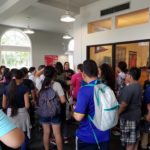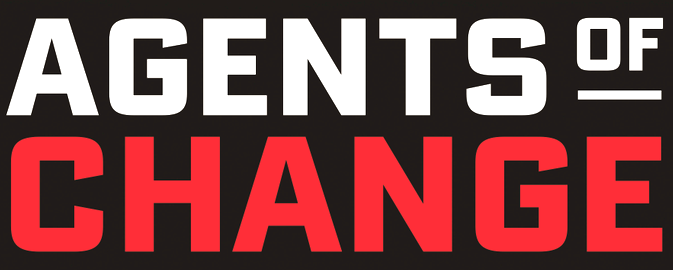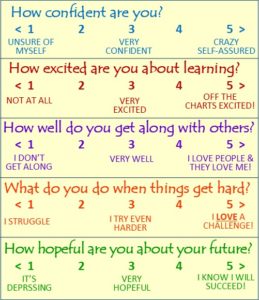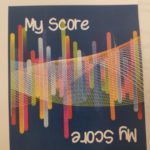THE NARRATIVE THEORY OF CHANGE:
Students who live inside a story that tells them they are “dumb”, “losers,” “troublemakers,” “kids with no future,” are students who face daunting internal obstacles to learning that often reflect their external circumstances of being victims of poverty, racism, struggling minority status or trauma. Emphasizing better grades or offering extra tutoring does not address the underlying cause of their failure to achieve because it does not address their fundamental lack of self-belief. Project CHANGE seeks to identify students with the most destructive self-talk and through an experimental narrative process called MYSCORE, to invite them to commit to behaviors that contradict the internal narrative of “Always struggling-Always failing.”
AmeriCorps members are trained to be “audiences of witness” to amplify the students’ new story of possibility. Project CHANGE is investing in students to become more confident, curious, collaborative, courageous, career and future focused. If students can learn to believe in their capacity to learn, Project CHANGE believes that this will increase their chances of success. Project CHANGE follows this innovative Social Emotional Learning (SEL) curriculum of self-development focused on what the student needs to learn or unlearn about themselves to be more open to what school offers.
Project CHANGE’s programs will be working directly with MCPS K-12 students, both within schools and in recognized after-school programs from communities that have the highest concentration of students living in poverty, students who have missed significant portions of their schooling, students who have at some point in their lives qualified for FARMS, or students who are learning English as a second language. Research shows that these students are more likely to develop problem-saturated stories, internalize a negative self-image, and to lack any sense of agency in creating their own future.
CORE ACTIVITIES:
Project CHANGE will provide weekly study and homework support, mentoring and personal development programming for 12-15 hours a week each semester, and conduct special holiday and summer programs. Project CHANGE members will make significant contributions to existing efforts in the following outstanding organizations that provide in-school and after-school educational and enrichment programming to high-need populations: Community Bridges, Family Learning Solutions, Project Change Olney, Identity Inc., YMCA Benchmarks, Montgomery Housing Partnership, Caring Matters, Saturday School, and Montgomery County Public Schools. Project CHANGE partners with proven organizations that are serving the neediest students of the county, and places its members only in selected schools where the MCPS Superintendent identifies the highest needs.
MODEL FOR
INTERVENTION-
MCPS has conducted annual surveys, school by school, asking parents and staff
to rate the efforts of their school. What is missing is any consistent
consultation with students as to how they feel about themselves as learners.
The story of each school is told from the “outside in” and not from the
“inside out.” The experimental approach of MYSCORE aims to empower
students to have a voice in their own story of learning and to challenge the
culture of evaluation that they experience so often as surveillance or control.
The point is to change their inner story before you can change the outer story
reflected in evaluations about them. Research states that these narrative
approaches with children “showed a significant improvement in
self-awareness, self-management, social awareness/empathy, and responsible
decision making.”(Journal of Systemic Therapies 35(3):42-59 Marie-Nathalie
Beaudoin et al)

The MYSCORE method uses the mediation of a caring mentor who serves as a student’s champion who coaches that student into a new story of possibility.
The first step in the process is for the struggling student to experience visibility as recognition, being seen and known and called by name.
The second step is to experience being heard, with her/his words being taken seriously.
The third step is for the student to experience the power of their own assessments, and to come to assess what assessments are getting in the way of their progress.
That is how AmeriCorps Project CHANGE members make a difference. The struggling student has someone there to help them become 5C learners, modeling confidence, curiosity, collaboration, courage, and career/ future focus.
EVIDENCE:
AmeriCorps members focus on Social-Emotional learning because research indicates students exposed to SEL score on average 11 points more in academic achievement. They have better pro-social behavior and fewer emotional and classroom control problems. They also experience education as an investment in their future, rather than a disconnected sequence of semesters. Pajares and Schunk of Emory/Purdue Universities write “many students have difficulty in school not because they are incapable of performing successfully but because they are incapable of believing that they can perform successfully.”(InformED May 26/16 Sara Briggs “4 Ways Self-Belief can transform learning.”

EVIDENCE OF CHANGE BECOMES EVIDENCE TO CHANGE:
Project CHANGE previously used instruments to measure impact on school engagement but determined these tools did not fit and were experienced by students as just “one more test.” Furthermore, results had no impact on improving the quality of service. After consultation with GOSV and other program partners and staff, Project CHANGE embarked on developing a customized instrument allied to the narrative theory of change and the positive SEL approach. The goal was to reframe evaluation as a student empowerment process where the student voice is heard, and the student self-assessment is taken seriously. The model, inspired by narrative therapy- a proven approach in family therapy, is informed by the growing use of SEL approach across the country.
SEL:
Evidence available through CASEL, (https://casel.org/building-grit-inthe-classroom-and-howto-measure-it/) highlights that education is failing to equip children with basic life skills. Their recent report states”40% of students are “chronically disengaged” and only 29% describe their school as a caring and encouraging environment. That echoes the 2014 MCPS Gallup Poll. While children have a right to believe in themselves and a right to be inspired, these needs are not being met. Though the emphasis on STEM is commendable, even employers are lamenting the lack of student readiness to be successful learners on the job, to be able to be collaborative and creative. The key to success in education is not simply a matter of high grades but to be resilient and optimistic, to be curious and creatively problem solve. But how do you even begin to teach this? First you have to listen to the students own assessments, and help them relate those assessments to their performance.
TRIAL TESTING:
After four years of testing and almost 2000 responses, the MYSCORE results consistently show students score low on question 2 “excited about learning.” This correlates to low scores on Optimism-question 5. Mapping the need is where one begins. At the same time, the instrument, while based on a small sample size, measures significant improvement of 20% of the students surveyed, while 50% improve or remain at a consistently high level of commitment to learning. Something more than good teaching is called for. As Jon Saphier writes, “Each year, a surprising number of schools narrow or eliminate the achievement gap. They convince students, especially underperforming, low-confidence students, that ability can be grown, they show them how, and they motivate them to want to.”(https://www.kappanonline.org/getting-students-believe)
THE INSTRUMENT:
MYSCORE is the customized instrument developed in 2016 by the Project CHANGE director and evaluation team comprising Dr. Robert Anastasi- former MCPS school principal, and Dr. Clare Keller- an experienced education evaluator. It consists of a colorful set of cards with 5 questions about CONFIDENCE, CURIOSITY-(excitement about learning), COLLABORATION- working with others, COURAGE in adversity-resilience, and CAREER-FUTURE focus- optimism, the 5 key elements research shows map on to student learning success. (Strengthening Student Engagement- What do students want- Robert Strong, Harvey Silver, Amy Robinson, Educational Leadership September 1995 volume 53, No 1) MYSCORE is administered as a Pre, Middle and a Post instrument with the results tabulated and analyzed to generate a report relayed back to the program partners and each member indicating the score of his/her own students. In three years of testing, almost 2000 responses have been collected, representing students from elementary to High School and showing 30% improvement in at least one scale in each year’s sample.


